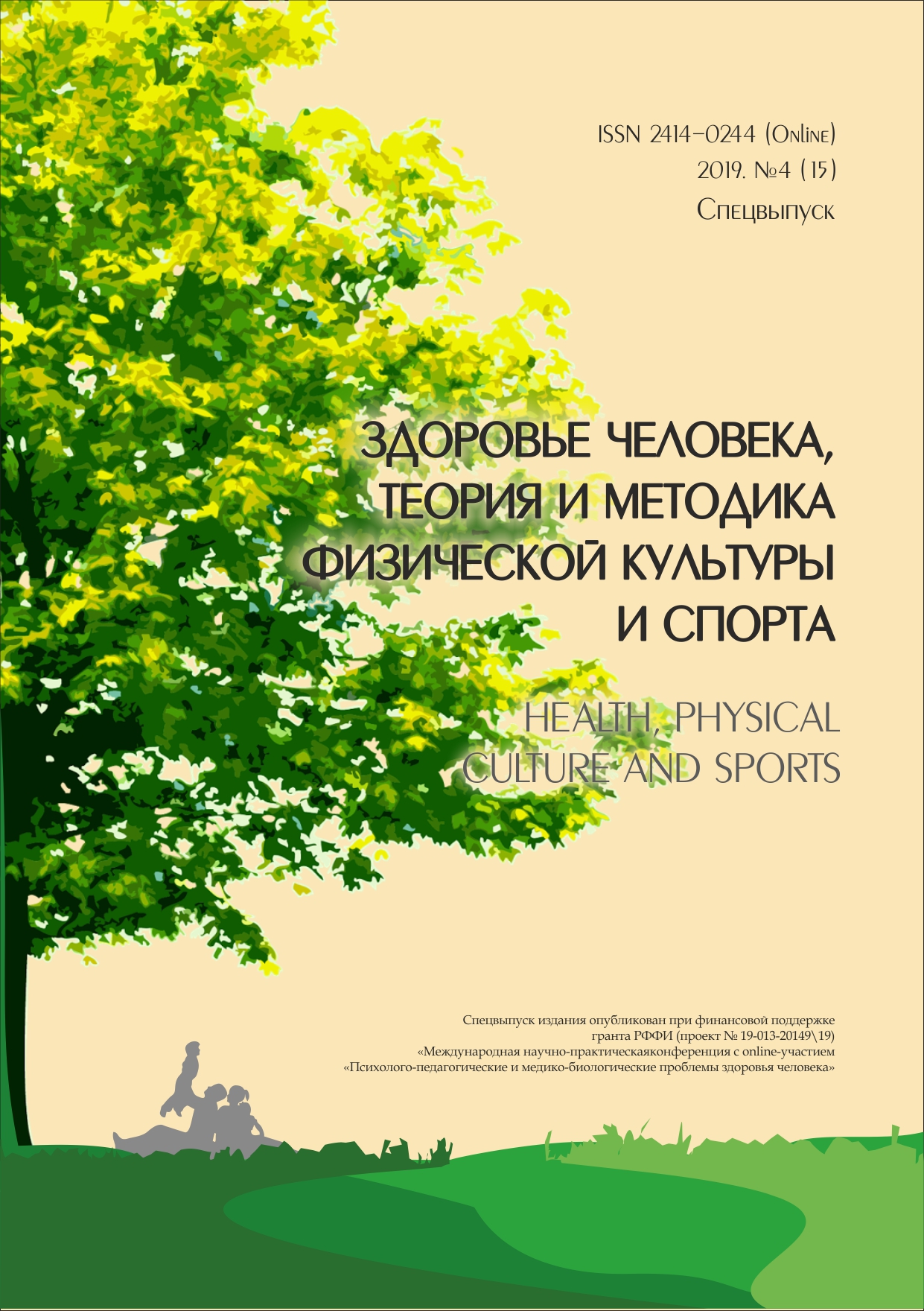HYGIENIC ASSESSMENT OF VITAMIN D LEVELS IN ATHLETES OF THE ODESSA REGION
Abstract
Despite the large amount of research on the role of vitamin D in training athletes, anumber of unexplored issues remain. The article presents the data of the 25‑hydroxyvitamin D levelin 214 athletes of the Odessa region (97 men and 117 women) involved in sports such as bodybuilding,running and swimming. The age of the athletes included in the study group varied from 19 to 35years (mean age 24,7 ± 1,5 years). The assessment of the level of total serum 25‑hydroxyvitamin D inathletes of various sports was carried out according to the recommendations of the US Institute ofMedicine (U. S. IOM). The aim of the study was to determine the level of 25‑hydroxyvitamin D (25(OH) D) in athletes of various sports of the Odessa region (bodybuilding, running and swimming)to verify the prevalence of deficiency and vitamin D deficiency. To assess the duration and frequencyof training (gym or outdoor area), the presence of complaints and the recovery period, among allathletes conducted questionnaires.The growing amount of evidence of the positive effect of vitamin D stimulates the developmentof nationwide guidelines for the prevention of vitamin D deficiency and deficiency among athletesin southern Europe.Vitamin D deficiency and deficiency are widespread among athletes of the Odessa region. Thelargest number of athletes with a deficit of 25 (OH) D was noted among bodybuilders.It has been established that the training site (gymnasium or open area) does not affect the levelof vitamin D in the blood serum of athletes belonging to the observation group. It was noted thatthe level of 25‑hydroxyvitamin D in the serum of athletes in various sports had virtually no genderdifferences.There is an urgent need for the correction of vitamin D status in athletes of various sports ofthe Odessa region. Prevention of the deficiency and deficiency of 25‑hydroxyvitamin D should be apriority for sports doctors and health institutions in the south of Ukraine
Downloads
References
Todd J., Madigan S., Pourshahidi K., McSorley E., Laird E., Healy M. et al. Vitamin D Status and Supplementation Practices in Elite Irish Athletes: An Update from 2010/2011. Nutrients. 2016; 8 (8):485.
Ceglia L., Niramitmahapanya S., Silva da M. M. et al. A randomized study on the effect of vitamin D3 supplementation on skeletal muscle morphology and vitamin D receptor concentration in older women // J. Clin. Endocrinol. Metab. 2013. Vol. 98. E1927–1935.
Todd J. J., Pourshahidi K. L., McSorley E. M. et al. Vitamin D: Recent advances and implications for athletes // Sport Med. 2015. Vol. 45. P. 213–229.
Cannell J. J., Hollis B. W., Sorenson M. B. et al. Athletic performance and vitamin D // Med. Sci. Sports Exerc. 2009. Vol. 41, № 5. P. 1102–1110.
Bendik I., Friedel A., Roos F. F. et al. Vitamin D: a critical and essential micronutrient for human health // Front Physiol. 2014. Vol. 5. P. 248.
Constantini N. W., Arieli R., Chodick G., Dubnov-Raz G. High prevalence of vitamin D insuiciency in athletes and dancers // Clin. J. Sport Med. 2010. Vol. 20. P. 368–371.
Chiang C. M., Ismaeel A., Griffis R. B., Weems S., Strength J. Efects of Vitamin D Supplementation on Muscle Strength in Athletes A Systematic Review // Cond. Res. 2016. Jun 28.
Dahlquist D. T., Dieter B. P., Koehle M. S. Plausible ergogenic effects of vitamin D on athletic performance and recovery / D. T. Dahlquist // J. Intern. Soc. Sports Nutrition. 2015. Vol. 12. P. 33–45.
De Jong N., Chin A., Paw M. J. et al. Functional biochemical and nutrient indices in frail elderly people are partly afected by dietary supplements but not by exercise // J Nutr. 1999. Vol. 129, № 11. P. 2028–2036.
Hamilton B., Grantham J., Racinais S., Hakim C. Vitamin D deiciency is endemic in Middle Eastern sportsman // Public Health Nutr. 2009. Vol. 10. P. 1528–1534.
Zittermann A. Vitamin D in preventive medicine: are we ignoring the evidence? // Br. J. Nutr. 2003. Vol. 89. P. 552–572.
Поворознюк В. В., Плудовски П. Дефицит и недостаточность витамина D: эпидемиология, диагностика, профилактика и лечение: монография. К.: Заславский А. Ю., 2015. 262 с.
An author should not normally publish manuscripts describing essentially the same research in multiple journals or publication venues. Such redundant publication is generally considered to constitute unethical publishing behavior, and if discovered may result in a manuscript under consideration being rejected, or a published article being retracted.
Authors of manuscripts reporting on original research should present an accurate account of the work performed, accompanied by an objective discussion of its significance. Underlying data should be represented accurately in the manuscript. The manuscript should contain sufficient detail and references to permit others to replicate the work. The fabrication of results and the making of fraudulent or knowingly inaccurate statements constitute unethical behavior and may be cause for rejection or retraction of a manuscript or published article.





